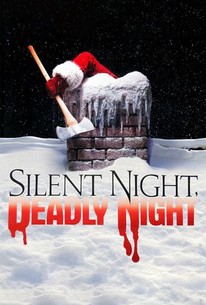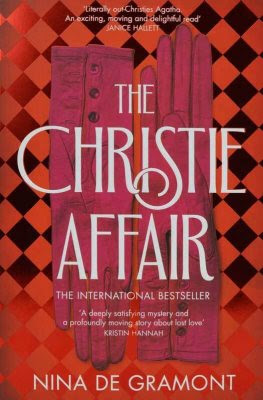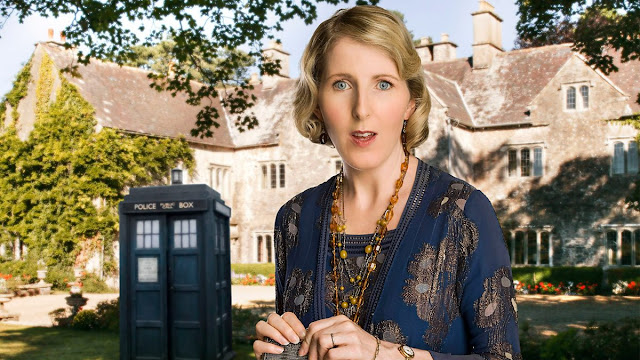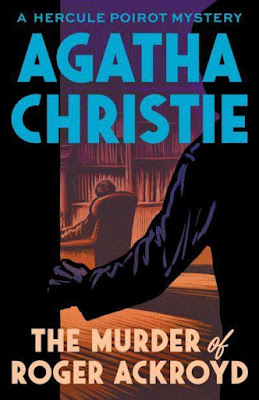In January 2022, I started using Goodreads, so I actually know how many books I read this year. I realised, after setting myself a 2022 challenge, that I read way more than I was expecting to, especially given that I also finished my PhD this year. I also discovered something that surprised me.
What I know about myself: I don’t really like crime fiction.
What Goodreads has told me: I read a few crime books this year.
Weird, right? Anyway, here are some thoughts I had about them.
Kill For It, Lizzie Fry
This is the author’s second book. As you all know from my interview with Lizzie Fry in 2021, I'm a BIG FAN of The Coven. The publisher kindly sent me an advanced copy of Kill For It, and I was very excited to jump in!
It was an interesting take on the story of a woman trying to make it in a man’s world… do I mean journalism? Or do I mean murder? Read the book to find out.
I liked that the two female protagonists, Erin and Cat, had some similarities and some differences without falling into the exhausting tropes of THESE TWO WOMEN ARE THE EXACT SAME BUT THEY DON’T REALISE IT BECAUSE ALL WOMEN ARE THE SAME or THESE TWO WOMEN ARE THE EXACT OPPOSITES OF ONE ANOTHER BECAUSE WOMEN ARE ALWAYS EASY TO CATEGORISE.
Admittedly, it was less to my taste than The Coven, which is an updated, intersectional witchy twist on The Handmaid’s Tale (honestly, what more could you want from a book?). If you want a story of obsession and ambition, and a character who becomes a serial killer the way you fall asleep – slowly, and then all at once – this one is for you.
Thank you @LizzieFryAuthor & @LittleBrownUK for this advance copy of KILL FOR IT 🗡 I can’t wait to read and review it for https://t.co/IClb4WPHfB 📚 #booktwt pic.twitter.com/cPADSmsOIA
— Dr. Shelby Judge 🌚 (@Judgeyxo) November 11, 2022
How to Kill Your Family, Bella Mackie
This book kind of reminded me of A. M. Homes’ The End of Alice, because the protagonist is also in prison, reflecting on their own crimes and the crimes of others. I enjoyed most of this book, because I do really enjoy an unreliable narrator; I always find interesting the protagonists with bizarre emotional responses. She was also snarky and witty, with just the right amount of misandry and bitterness towards rich people.
I will say: if you’re looking for a book with any likeable characters, you’ve come to the wrong place. But if you’re looking for a book where you massively dislike everyone involved, it’s time to read How to Kill Your Family.
The book is exactly what it says it is. Until the ending.
Which, personally, I didn’t like.
 |
| Source |
Final Girl Support Group, Grady Hendrix
This book is so far out of my comfort zone, I got it from the section I never even venture into in the library: Crime! Why did I wander into those stacks? For this book, which I saw in a bookstore and suddenly really fancied reading.
This is a not-so-subtle reminder to get a library card.
It’s a fascinating play on genres that are typically very misogynistic and violent towards women: crime fiction and slasher movies. I especially think it’s important to read in our age of true crime, where we as a society seem to have a voracious appetite for voyeurism when it comes to victims of sexual violence, domestic violence, murder, cannibalism, and religious cults.
Lynette is a member of the “Final Girl Support Group”, a monthly therapy session for women who have survived massacres. Specifically, women who turned it around and killed their would-be murderers, bringing their sprees to an end. If you’re thinking this sounds a lot like every horror movie, you’re right: all of these women have had their stories turned into slasher flicks. In fact, all of the protagonists are based on the final girls in well-known horror films.
Adrienne was a camp counsellor who survived a killer seeking revenge for an imagined son, like in Friday the 13th.
Marilyn was a beauty queen attacked by bloodthirsty cannibals straight out of the Texas Chainsaw Massacre movies.
Dani’s brother escaped a mental institution to come and kill her on, you guessed it, Halloween.
Heather had to face the Dream Killer, also known as Freddie Kruger.
Diane’s would-be killer was her boyfriend, who was actively trying to turn her into a Final Girl from slasher films, like Ghostface from the Scream franchise.
Lynette’s “Silent Night Slayings” hail from the Silent Night, Deadly Night franchise. (Which I had never heard of before, but which I absolutely need to watch because they sound hilariously bad)
Anyway, the novel is what DuPlessis would call ‘Writing Beyond the Ending’, with all the middle-aged “girls” living with their trauma, continued voyeurism via cult followings, as well as the inevitable victim blaming on reddit. Their different trauma responses are put to the test when someone makes it their mission to make final the Final Girls.
The Twyford Code & The Appeal, Janice Hallett
Oh my god I absolutely loved these books! I read The Twyford Code and literally the second I finished it, I wanted to read it again. Instead, I borrowed the eBook of The Appeal and read that in one sitting. The Appeal was made up of emails, while The Twyford Code was transcribed voice notes, which made the reading experience a lot of fun!
These are brilliantly clever literary scavenger hunts, and though I did a terrible job working them out, I had so much fun being along for the ride.
With The Twyford Code in particular, once I finished it I was just struck by the cleverness of the writer. I think it’s fair to say I had the exact response that every crime novelist and TV writer is hoping for. Gaping shock, flicking back through the story to try to pick up on the clues I’d missed, and just… joy.
Read The Twyford Code. Read it now.
The Christie Affair, Nina de Gramont
I am a bit obsessed with Agatha Christie. Her books, the film and TV adaptations of her books, her life, the Doctor Who episode about her…
That's why I was really excited to read The Christie Affair, which is a novelisation of the very real unsolved mystery in Christie’s life. After her first husband announced that he was leaving her for his mistress, Agatha Christie went missing for 11 days. She turned up in a hotel in Harrogate. Two doctors diagnosed her with “an unquestionable genuine loss of memory”, and she apparently never spoke about the period to anyone. She even omitted it from her autobiography.
The book is from the perspective of her husband’s mistress, who has her own secrets to hide, and it takes place alongside a Christie-esque mystery, with an oddball detective to boot.
I didn't enjoy this book as much as I thought I would, maybe because I just kept comparing it to that episode of Doctor Who.
What The Christie Affair did do, though, was remind me of how much I enjoyed reading Agatha Christie’s books. I remember them giving me the same dumfounded shock and joy that we all look for in crime / mystery / thriller books. So, with that, I’m off to my mum’s for Christmas, where I plan to eat vegan bacon, play Hades on my Nintendo Switch, and read some Agatha Christie books, starting (of course) with The Murder of Roger Ackroyd.








Comments
Post a Comment